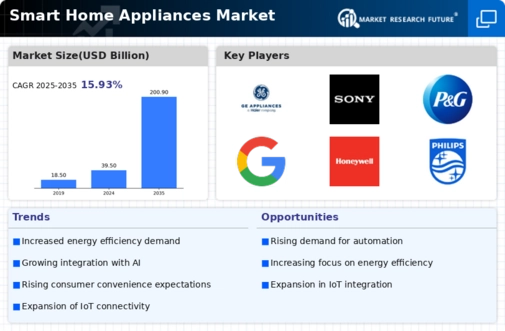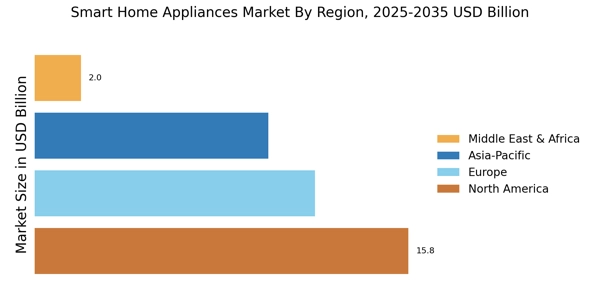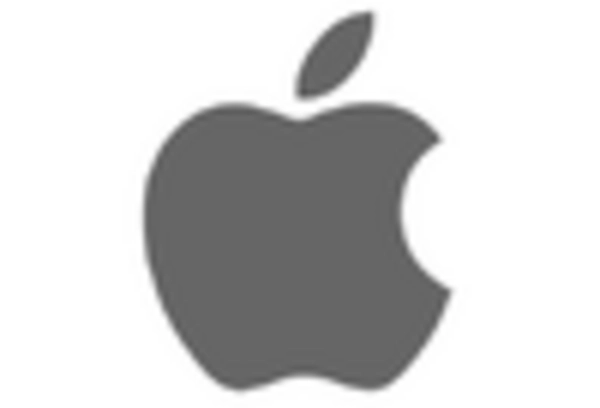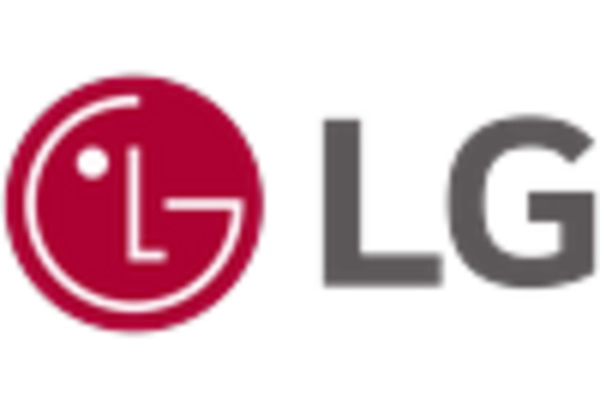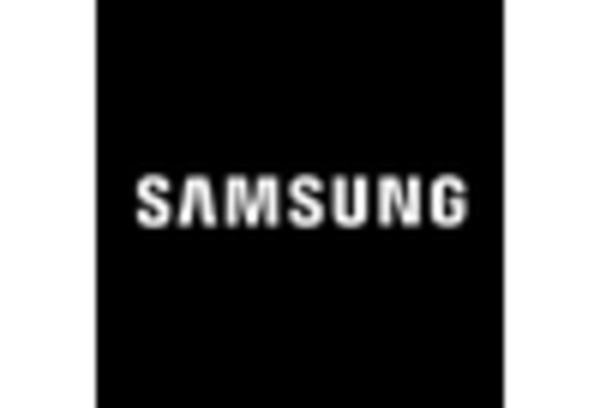Integration of Voice Assistants
The integration of voice assistants into smart home appliances is transforming the Smart Home Appliances Market. Voice-activated technology allows users to control their devices hands-free, enhancing convenience and accessibility. Popular voice assistants, such as Amazon Alexa and Google Assistant, are increasingly being embedded in various appliances, from smart speakers to kitchen gadgets. This trend is indicative of a broader shift towards more intuitive user interfaces, which are expected to dominate the market. As consumers become more accustomed to voice-controlled technology, the demand for compatible smart appliances is likely to rise, further propelling growth within the Smart Home Appliances Market.
Increased Focus on Home Security
The heightened focus on home security is a significant driver for the Smart Home Appliances Market. As concerns about safety and security grow, consumers are increasingly investing in smart security systems, including cameras, alarms, and smart locks. These devices not only provide real-time monitoring but also offer remote access and control, enhancing peace of mind for homeowners. The market for smart security appliances is projected to expand rapidly, with estimates suggesting a growth rate of over 15% annually. This trend underscores the importance of security in the smart home ecosystem, prompting manufacturers to innovate and integrate advanced security features into their product offerings within the Smart Home Appliances Market.
Technological Advancements in IoT
Technological advancements in the Internet of Things (IoT) play a pivotal role in shaping the Smart Home Appliances Market. The integration of IoT technology enables appliances to communicate with each other and with users, creating a seamless and interconnected home environment. For instance, smart thermostats can learn user preferences and adjust settings automatically, leading to enhanced energy efficiency. The proliferation of IoT devices is expected to reach billions in the next few years, indicating a robust growth trajectory for the Smart Home Appliances Market. This interconnectedness not only improves functionality but also enhances the overall user experience, making smart appliances more appealing to consumers.
Growing Awareness of Energy Efficiency
The increasing awareness of energy efficiency significantly influences the Smart Home Appliances Market. Consumers are becoming more conscious of their energy consumption and its environmental impact, leading to a preference for energy-efficient appliances. Many smart devices now come equipped with energy monitoring features, allowing users to track and optimize their energy usage. Data suggests that energy-efficient appliances can reduce energy consumption by up to 30%, making them an attractive option for eco-conscious consumers. This trend not only aligns with The Smart Home Appliances Industry, as manufacturers strive to create products that meet these evolving consumer expectations.
Rising Consumer Demand for Convenience
The Smart Home Appliances Market experiences a notable surge in consumer demand for convenience-driven solutions. As lifestyles become increasingly hectic, consumers seek appliances that simplify daily tasks. This trend is reflected in the growing popularity of smart kitchen devices, such as automated cooking systems and smart refrigerators, which offer features like remote monitoring and recipe suggestions. According to recent data, the demand for smart appliances is projected to grow at a compound annual growth rate of over 20% in the coming years. This shift towards convenience not only enhances user experience but also drives innovation within the Smart Home Appliances Market, prompting manufacturers to develop more intuitive and user-friendly products.

